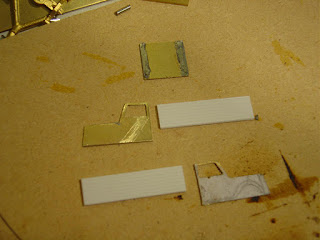12 months ago everything was going into boxes in preparation for the great move north. This has worked out very well for us personally and for me professionally. Its nice to work somewhere where one is appreciated and the atmosphere is rather more fun. The lady of the house has also completed her degree this year (only 20 years in the making) and is on to further study next year. So baring family fires and some health issues its been a good year all round her at Schloss Dandruff
Layout wise tracks were still getting made. I could run a loco a whole 7'.

Moving on 12 months later and short of the turntable and the main join between the 2 northern boards its pretty much done. The major other parts to do are checking the track is all in gauge etc and installing the booster for the DCC set up.
In the loco and rolling stock department, there have been a couple of oddities in the Price Cb and rail truck that saw the light of day. On the real rolling stock front there was pretty much zip. The is no Ew to grace the rails, and the large steam locos remain firmly on the drawing board. With the wagons the main problem I face is decent wheels to an NMRA standard on a short axle. I can't get hold of any of the newer Dapol or Farish stuff (and believe me, I've tried) which have the right wheel size. Any US stuff is just too small (5.5-5.7mm vs 6.2mm and to me yes it does make a difference). The 2mm stuff is very pretty, but my track making skills are not quite up to it. However I'm looking forward to the etched underframes from MMW so that may spur me on in the new year.
So what will the new year bring? I'm hoping for some more etching being done, and possibly even a couple of kits or something. Certainly completion of some of my loco desires for Paekakariki. I'd like to think that by this time next year the layout has moved on a bit more
You'll have to excuse me now. Its raining and I'm off out to the Man-sion....
UPDATE; As an aside, does anyone have any suggestions for a cheapish USB web cam? I'm just experimenting out in the shed and the one I own is complete crap.









































